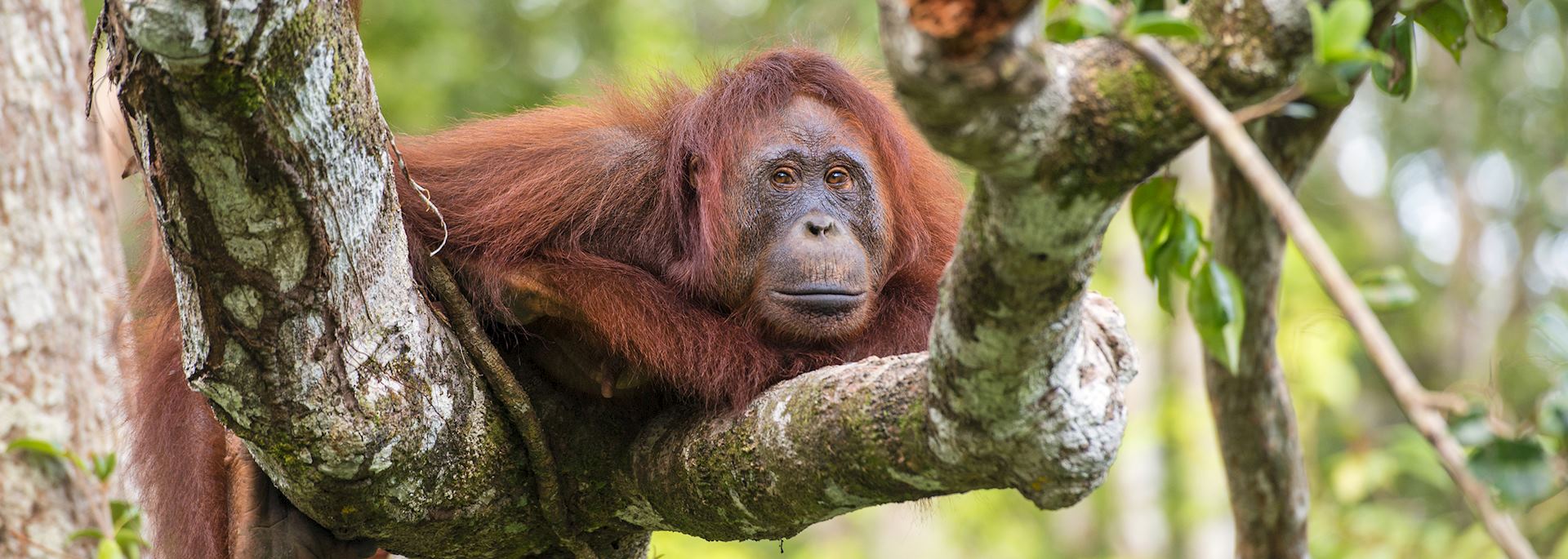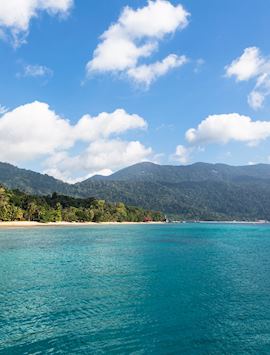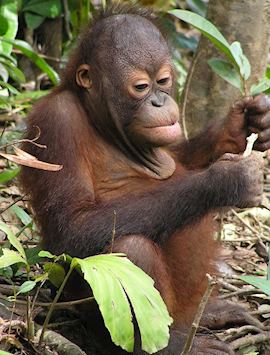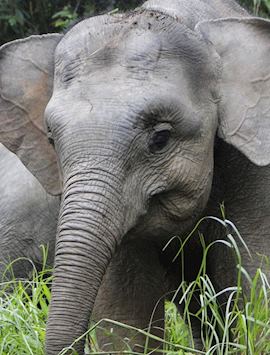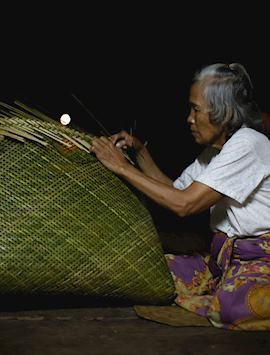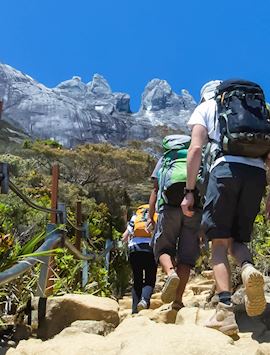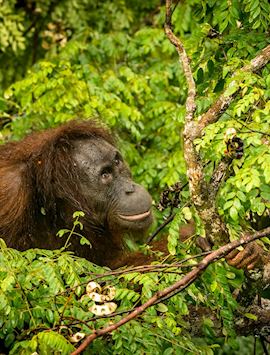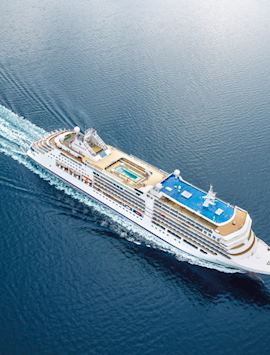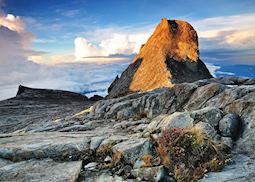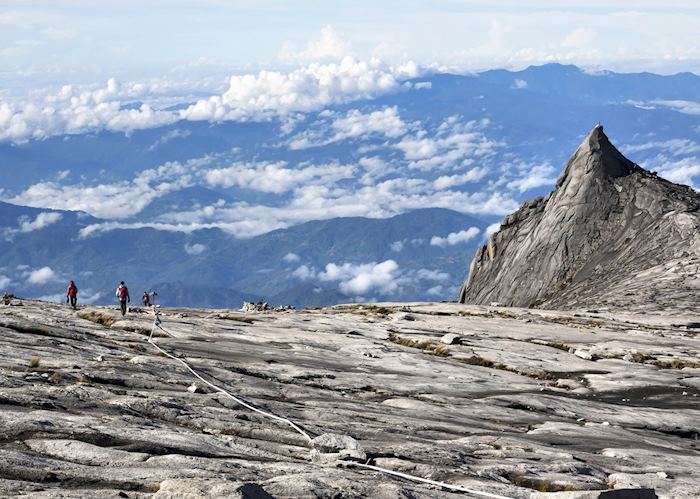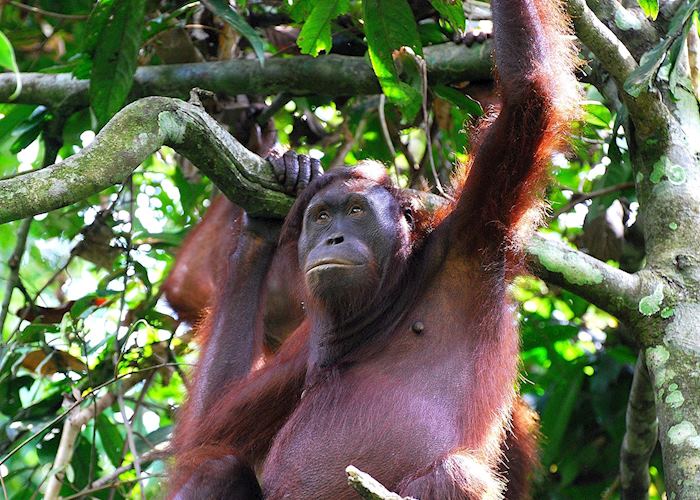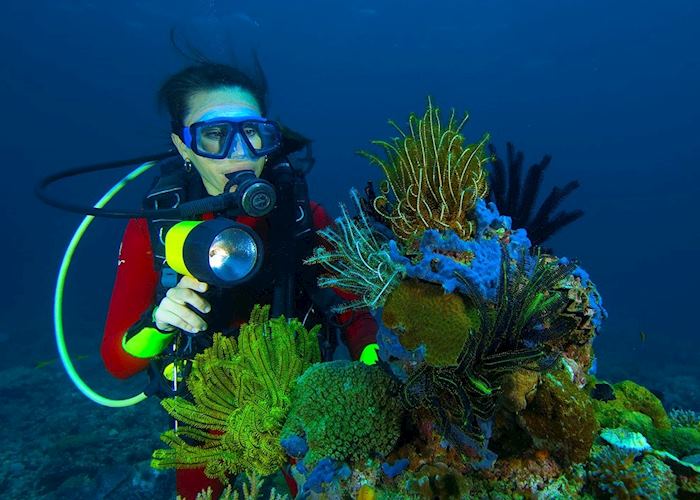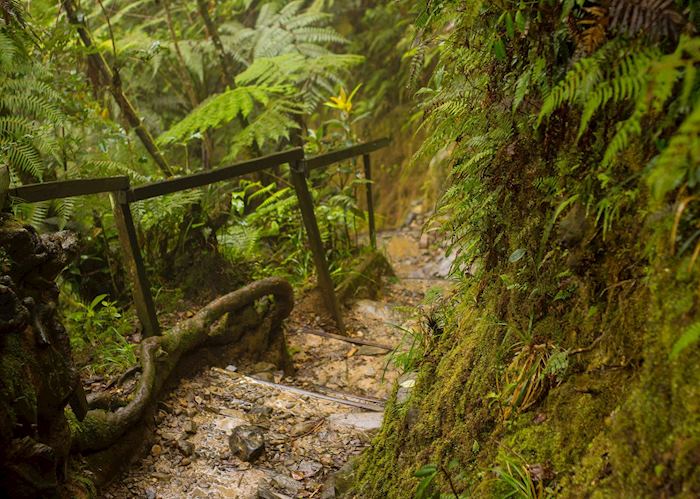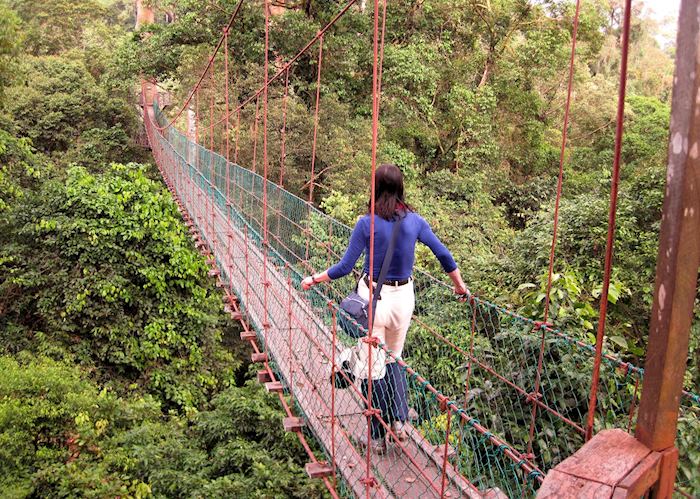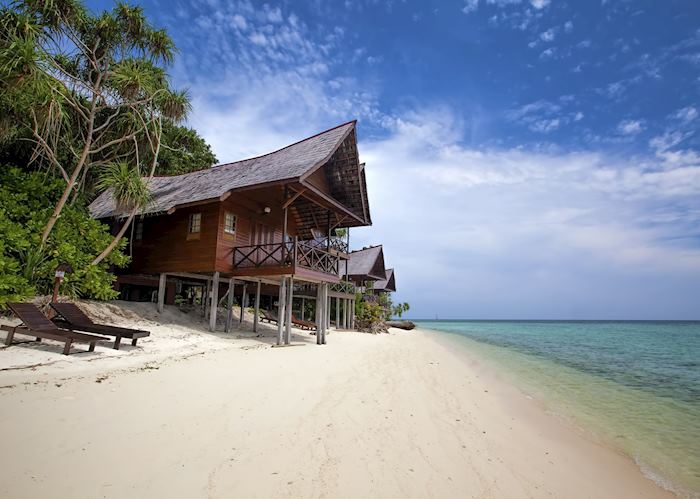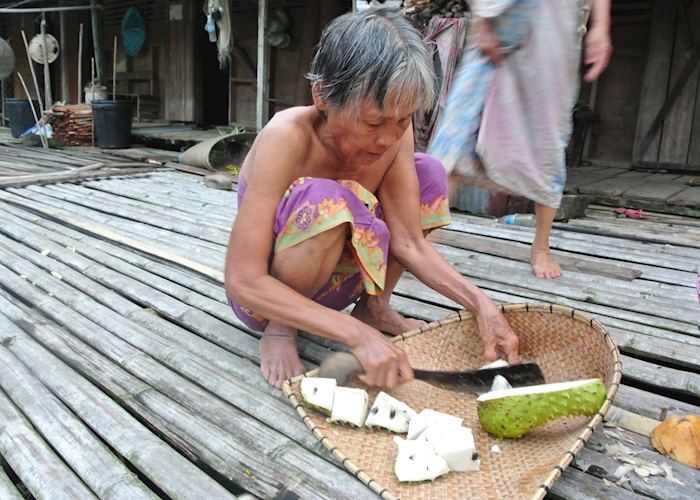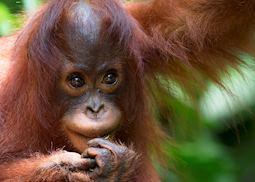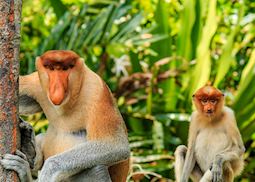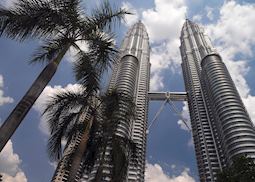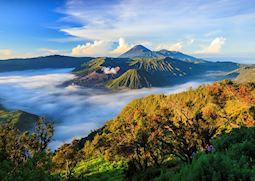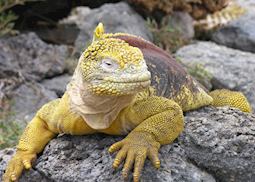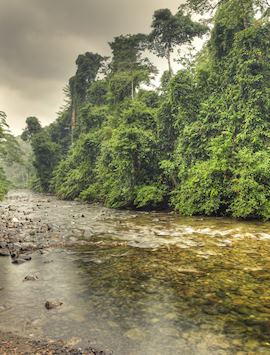
Rich equatorial rainforest, wild orangutan and the Kinabatangan River... On a tailor-made holiday to Borneo with Audley, you’ll see the highlights — and much more — your way. We’ll design your ideal trip with you, paying close attention to your interests, your travel style and your budget. Our Borneo specialists know the country inside out and can lead you to experiences you won’t find in a guidebook.
Savour sunrise atop Mount Kinabalu, the island’s highest peak. Be a guest of the Iban tribe with a night in a traditional longhouse. Trek beneath some of the world’s tallest trees, while a symphony of insects click and hum in the background. Leave a positive impact on the island by seeking out its rare leopards and proboscis monkeys responsibly. Snorkel around offshore islands and relax on a stretch of powder-soft sand.
The great bat exodus at Gunung Mulu National Park, freshly cooked street food, a rhinoceros hornbill in flight… What excites you? Travel at your own pace, in your own style, with the confidence that we’ll show you the best options for your holiday to Borneo.
Suggested tours for Borneo
These tours give you a starting point for what your holiday to Borneo could entail. Treat them as inspiration, as each trip is created uniquely for you.
Suggested activities for Borneo
Whatever your interests, our specialists will build activities into your trip that connect to how you want to experience Borneo.
-
Orangutan rehabilitation sanctuary at Sepilok ![Baby orangutan at the Sanctuary]()
Orangutan rehabilitation sanctuary at Sepilok
Kota KinabaluOrangutan rehabilitation sanctuary at Sepilok
The centre rehabilitates orphaned orangutans and those that have been held in captivity. It's set amidst dense jungle and you can take a walk into the jungle to see them in their natural environment.
View details -
Mount Kinabalu Climb — 2 Days ![Mount Kinabalu, Borneo]()
Mount Kinabalu Climb — 2 Days
Mount KinabaluMount Kinabalu Climb — 2 Days
The Park Headquarters is located at 1,550 metres and your aim on the first day is to reach Laban Rata at around 3,200 metres. You are accompanied by your guide who is assigned at the Park Headquarters.
View details -
Kayaking Rainforest Adventure ![Iban woman preparing lunch for the longhouse, Lemanak River, Sarawak]()
Kayaking Rainforest Adventure
KuchingKayaking Rainforest Adventure
This is a great experience for nature lovers and the adventurous. After a 40-minute drive from town you arrive at the mist covered hillsides around Bengoh, a delightful Bidayuh village.
View details
Why travel with Audley?
- 100% tailor-made tours
- Fully protected travel
- Established for over 25 years
- 98% of our clients would recommend us
Best time to visit
Our specialists advise on the best months to visit Borneo, including information about climate, events and festivals.
Request our brochure
Covering all seven continents, The World Your Way shows you how you can see the world with us. It features trip ideas from our specialists alongside hand-picked stays and experiences, and introduces our approach to creating meaningful travel experiences.
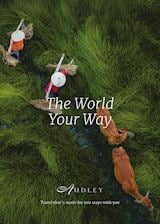
Useful information for planning your holiday in Borneo
With a strong mix of Malay, Chinese, and Indian influences, Borneo’s culinary dishes are best appreciated in the street-food markets of Kuching and Kota Kinabalu. Dishes range from tandoori-spiced kebabs to Chinese-inspired prawn fritters. A particular speciality is laksa, a fragrant coconut milk noodle soup.
A guided street food tour is a good way to try some of the best Borneo cuisine, or for a more in-depth look, we could arrange a cooking lesson with a local family.
For the latest travel advice for Borneo, including entry requirements, health information, and the safety and security situation, please refer to the Foreign, Commonwealth & Development Office website.
Bahasa Malaysia, often simply referred to as Malay, is the official language of Malaysia, but English is widely spoken. Other languages you’re likely to hear are Chinese (Mandarin), Hindi, Iban, and other indigenous dialects.
The currency in Malaysian Borneo is the Malaysian ringgit (RM).
One of Borneo’s key experiences is wildlife spotting. You can travel by boat along the Kinabatangan River looking for proboscis monkeys and rare pygmy elephants. Or, you can head deep into one of its many national parks to search for wild orangutans. It’s also an island suited to active adventures, from jungle hikes to a two-day climb up Mount Kinabalu, a 4,095 m (13,435 ft) peak that juts up from the north of the island.
While the natural world is often the focus, there are plenty of opportunities to experience Borneo’s cultural side, too. You could stay in a longhouse as a guest of the Iban people, take a street-food tour of Kuching, or stay in a family home in Bako National Park. You can read about these experiences in more detail in our highlights guide to Borneo.
If you only choose one place to visit in Borneo, it’s hard to beat the Kinabatangan River, a forested sanctuary of oxbow lakes, rainforest, and mangroves. A cruise here will showcase the best of the island’s wildlife. This pairs well with a stay at Sandakan, a town which hosts three sanctuaries that showcase Borneo’s rich ecosystems: Sepilok Orangutan Rehabilitation Centre, the Bornean Sun Bear Conservation Centre, and the Rainforest Discovery Centre.
To dive deeper into the rainforest, Mulu National Park hosts some of the world’s largest bat populations in its cathedral-like caverns. Danum Valley offers an exclusive jungle experience in comfort, while Deramakot Forest Reserve is a remote scientific research station well off the tourist trail. Our specialists can help you choose the places to go in Borneo that suit you best, but as a starter, you can read more about these destinations here.
The easiest way to see orangutans in Borneo is to visit Sepilok Orangutan Rehabilitation Centre, where you’ll encounter rescued youngsters and adults at close quarters as they come to feed at large wooden platforms set into the forest. As part of your visit, there’s an exhibition and video that explains the orangutans’ lifestyle, and the best part — a viewing room in the nursery where you can see babies fling themselves enthusiastically around a rope playground.
However, there’s something very special about seeing an orangutan in the wild, and arguably the best way to see orangutans in Borneo is in one of the national parks, including Danum Valley, Tabin Wildlife Reserve, and Deramakot Forest Reserve.
We’ve created a sample itinerary focused around some of Borneo’s best orangutan-spotting experiences, while Borneo specialist Sophie writes in more detail about the best ways to spot orangutans in our orangutan guide.
Borneo is home to a long list of other wildlife including sun bears, multiple species of crocodile, and enough bird species to fill entire guidebooks. Some animals, including proboscis monkeys, with their bulbous noses, hornbills, and flying squirrels are relatively easy to spot.
Others, including clouded leopards, Sumatran rhinos, and Borneo bay cats, are much harder to spot, and you’ll need the help of an experienced wildlife guide to stand the best chance of a sighting. The World Land Trust estimates that there are between 1,000 and 1,600 Bornean pygmy elephants left, which you’re most likely to see by the banks of the Kinabatangan River.
The waters that surround the island are also rich in life, including green and hawksbill turtles, soft corals, and rare Borneo sharks, a shy species that rarely grow longer than 70 cm (2 ft).
While you’re exploring the wilds of Borneo, you’ll usually stay in lodges set among the trees or stilted over the river. They have their own experienced wildlife guides who’ll help you explore the surrounding area. For a more immersive cultural experience you can stay in an Iban longhouse as a guest of the local community, or in a homestay in a Malay fishing village.
To relax, there are a number of beach resorts near the town of Kota Kinabalu, or you could stay on Gaya Island, a jungle-covered island off the island’s north coast, which is home to a small selection of secluded beach escapes. Our specialists have hand-picked some of the best places to stay in Borneo on our accommodation page.
You should try to book your trip to Borneo around 6 to 12 months in advance, particularly if you're planning to visit during the busiest (and less rainy) period between June and September. The best wildlife lodges and riverside retreats book up early, especially along the Kinabatangan River and Danum Valley.
If you'd like to avoid the busy season, our specialists can suggest the best times and places to visit away from the crowds, giving you an even more intimate wildlife-spotting experience.
You can’t fly direct to Borneo from the UK, but there are regular connections to Kuching via Singapore, which takes around 15 hours.
The time zone in Borneo is GMT +8.
The best way to travel around Borneo depends where you are. To cross the vast swathes of jungle and farmland, domestic flights are ideal, especially if you’re visiting Danum Valley or Deramakot Forest Reserve. If you’re exploring the Kinabatangan River, boats are your only option. Around the towns and cities, we can arrange for a private car, although most places are small enough to explore on foot.
Use our travel tool to find up-to-date visa and passport requirements for Borneo. Enter where you’re travelling to and from (including any stopover destinations en route or flight layovers), along with your intended travel dates and passport details, for a full list of requirements.
Your doctor can provide you with vaccine advice for Borneo, but we recommend you’re up to date with the recommended vaccinations for your home country. You can also check the suggested vaccinations on the Travel Health Pro website.
There isn’t a risk of yellow fever in Borneo, but you’ll need to carry a yellow fever vaccination certificate if you’re arriving from any countries where there is a risk, including if you’ve transited for more than 12 hours through an airport in a country at risk of yellow fever.
Borneo in pictures
Our expert guides to travelling in Borneo
Written by our specialists from the viewpoint of their own travels, these guides will help you decide on the shape of your own trip to Borneo. Aiming to inspire and inform, we share our recommendations for how to appreciate Borneo at its best.
-
![Introducing Borneo]()
Introducing Borneo
Southeast Asia specialist Nicki describes her highlights of Borneo, including the wildlife, rainforests and beautiful beaches.
-
Borneo family holidays ![Baby Orangutan at the sanctuary]()
Borneo family holidays
Borneo family holidays
Borneo specialist Sophie explains why Malaysian Borneo is a great family holiday destination. She recommends engaging ways to spot wildlife, experience tribal cultures and have jungle adventures.
Read this guide -
Seeing orangutan in Borneo: Malaysia or Indonesia? ![Baby orangutan at the Sanctuary]()
Seeing orangutan in Borneo: Malaysia or Indonesia?
Seeing orangutan in Borneo: Malaysia or Indonesia?
Although Borneo is the place to see orangutans in the wild, its political separation as part Malaysia, part Indonesia does leave you with choices for where to plan your orangutan-spotting trip. Our expert Sophie helps you decide: Indonesian or Malaysian Borneo?
Read this guide -
What to see in Borneo: our highlights guide ![Proboscis monkeys, Sandakan, Borneo]()
What to see in Borneo: our highlights guide
What to see in Borneo: our highlights guide
This guide features recommendations for things to do in Borneo. It focuses on the states of Sabah and Sarawak in Malaysian Borneo, which offer a lot of variety in a smaller radius than Indonesian Borneo.
Read this guide -
The top 7 experiences in Borneo ![Street food, Kuching, Borneo]()
The top 7 experiences in Borneo
The top 7 experiences in Borneo
In this bitesize guide, Borneo specialist Sophie has picked out her top seven experiences on the island. Yes, she’s included orangutan spotting, but there’s a lot more to this jungle-covered island.
Read this guide
Other popular destinations
Still looking for ideas? If Borneo has captured your interest, we think you might also like these destinations.

